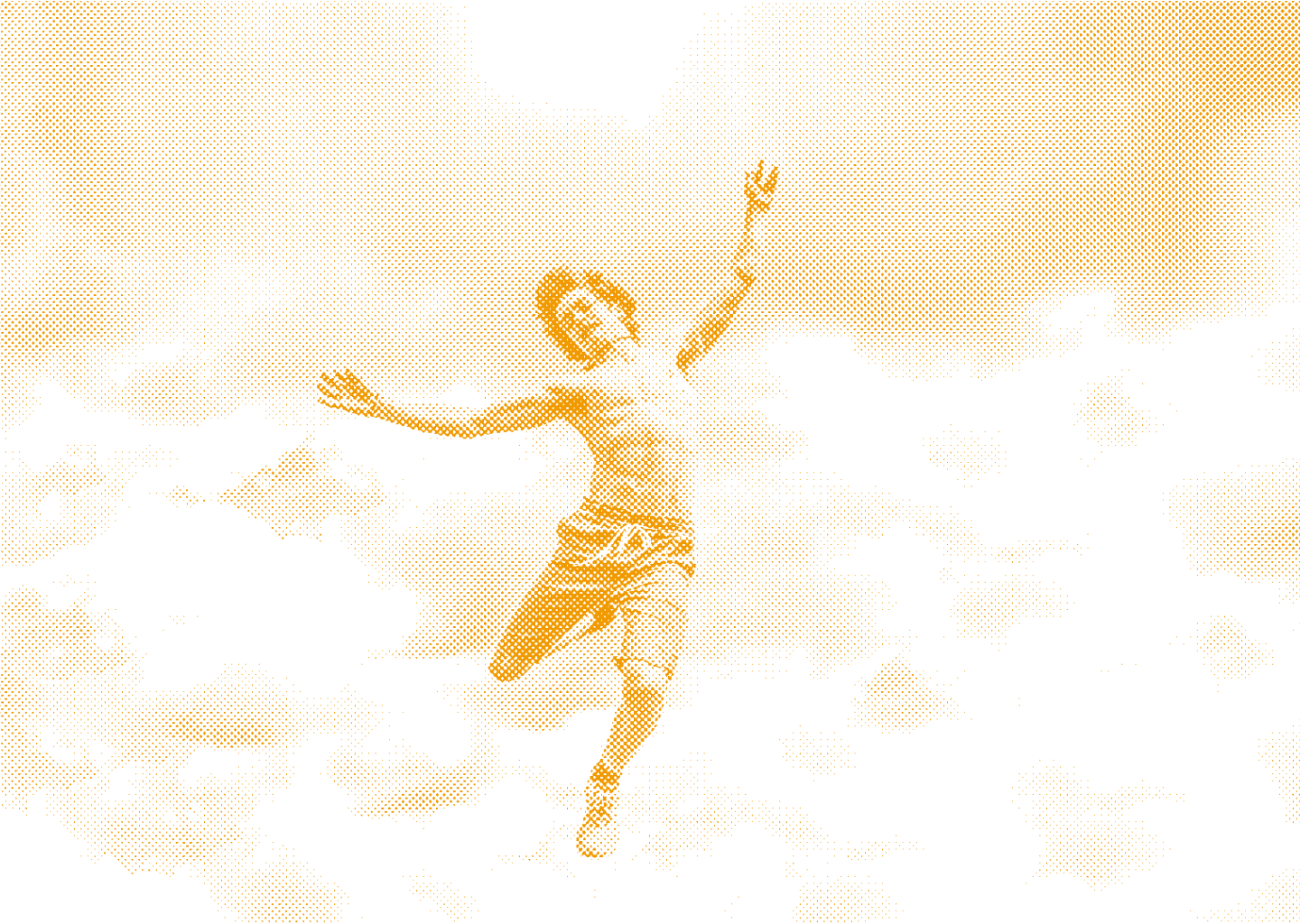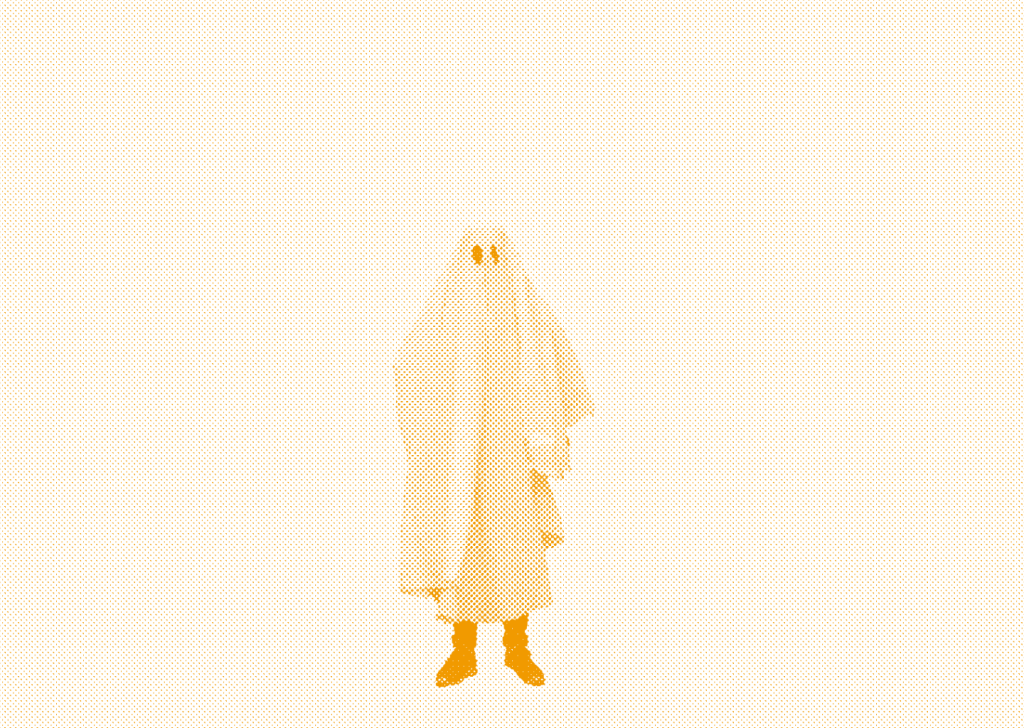
Movement
CHAPTER 1 / INTRODUCTION
The section “Make your own opera” is aimed at students within and without the school setting, the educational community, and all those who like opera and the performing arts in general and would like to dare to create and stage their own performance. It is not a guide containing concrete steps or methodologies you need to follow to make your own show; “Make your own opera” is rather a source of inspiration, a section offering information that can surely be useful to you throughout the process, a section that aspires to make you feel creative without being preoccupied with whether or not you have the appropriate space, human resources or means. It is an educational tool that you can use for prearranged school celebrations – by implementing specific chapters of the provided material –, a big final presentation at the end of the school year, a performance you want to stage with your class, or even for your classes as part of the curriculum, starting from just one chapter. The stage that is hidden in your class is waiting for you to reveal it.
So make your own opera performance, and don’t get scared off by the title. Remember that opera constantly transforms and has a lot to teach you!
This chapter is dedicated to movement and the choreographer’s profession. Choreographers focus on the movement of performers, both as individuals and as an ensemble, by shaping the movement of a show’s characters, creating movement motifs, shapes and images, and in general, making use of his non-verbal way of expression. A choreographer, in close collaboration with the director and the composer, is responsible for designing the movement and coaching the performers.
In this chapter we will try to explore the way a choreographer works, their creative process on a work of the performing arts like opera and music theatre.
How can the body tell stories without using speech? How can the body enhance the understanding of a role for a performer and, subsequently, the viewing experience of the audience? A choreographer, always in collaboration with the director, needs to seek ways to create movement motifs for each role, as well as choreographies that will give the work form and bring its characters to life. To better understand this process, in terms familiar to us, a choreographer is called upon to devise a movement vocabulary for each role. Body posture, positions on the stage, movements, gestures, rhythm, intensity, dynamics, all these elements compose the vocabulary of a role and of an ensemble. It is extremely important that these elements come as a result of the study of each role, in combination with the text and the work’s background (time, space, etc.) as set by the director, if want to build complete characters. This is so because movement characteristics (intensity, speed, etc.) and specific gestures, moves and positions can reveal aspects of the characters, their experiences, but also their state of mind and attitude towards the flow of the events in a story.
In opera, movement standards may become more complex. Designing the movement, in some cases, must align with the level of difficulty of the music work. For example, if a particular role has to perform a very demanding aria at some point in the work, the choreographer must take that into account while designing the movement, in an effort to eliminate any physical or vocal difficulties for the performer. However, opera is also one of the fields where we’ve noticed changes over the years in regard to how movement is treated and designed, both by choreographers and performers. Watch in “New Trends in Opera” the interview of choreographer Marianna Kavallieratou on the body’s position in modern opera.
Below, we will examine some possible ways of exploring the creative process followed by a choreographer:
- Reading the text & listening to the work’s music
- Discussing with the director
- Doing research on the time period, setting, and societal backdrop of the work / searching for sources of inspiration
- Creating a choreography for the performance
CHAPTER 2 / POOL OF IDEAS
Whether you are in a group setting or a school classroom, you can choose the way you want to work, either collectively, or divided into sub-groups, or even individually, designating a member of the group or pupil for each specialty.
Reading the text & listening to the work’s music
This step is the same for all the creative professions that collaborate to make a work of the performing arts. Every professional studies the textual and musical material from their own perspective, however, they all have to go through this step. In many group settings, as is the case of school settings, it would be interesting if this first step was taken both individually and collectively, as such a collective process could serve as a way of sharing ideas and suggestions and exploring new directions for the work. In any case, before moving on to the next steps, a choreographer needs to have a thorough understanding and knowledge of the text and the music of the work, so that they can understand its context, style and characters.
Discussing with the director
As mentioned earlier in the director’s profession, the collaboration of different specialists in a work of the performing arts is key to a creative process. The same is true in the case of a choreographer: collaborating with all the other opera-related professionals and especially with the director is necessary. Through this collaboration, the choreographer will be able to develop an in-depth knowledge of the work and understand all of its aspects, its style, atmosphere, the characters and their psyche, the social background, the era when the work is set etc. All these characteristics, as well as many more, are vital to the work of a choreographer, whose goal is to energize the performers’ bodies and through them and their movement language, breathe life into the work itself. After collecting all this information and receiving answers from the director to any questions that may arise, the choreographer can continue with researching the context of the work.
Doing research on the time period, setting, and societal backdrop of the work / searching for sources of inspiration
In this step, after having gained a good knowledge of the text and having analyzed the work, the choreographer can continue by doing research on its context and seek inspiration from the findings. This search can be done through various sources, such as texts, videos, films, paintings, drawings etc. By clearing out when and where the work is set, as well as the societal backdrop against which it unfolds, a choreographer can understand the setting in which the story is going to develop, as well as the psychological portraits and beliefs of the characters. All of the above will determine to a great extent the movement, the creation of movement motifs and the possible choreographies of a show. For example, imagine that your performance is coming from the future and its action is set in space; you will need to explore and visualize the way in which bodies move in space, take into account the lack of gravity factor, and think about what kind of costumes the characters could be wearing and how these could hinder or restrict their freedom of movement.
Creating a choreography for the performance
In this step, a while before the start of the rehearsals with the performers, the choreographer needs to create the performance’s choreography and movement design, by taking into account all the standards regarding the movement. The movement motifs of the characters, dance moves, choreographies, spatial relationships between the performers and in regard to the stage etc. All of the above must always be combined with the following elements:
- Type of action (walking, running, jumping, crawling etc.)
- Speed (fast, slow etc.)
- Music (movement with or without music)
- Music (movement with or without music)
- Energy (high, low etc.)
- Character’s body (shape, size, body part, special traits etc.)
ACTIVITY 1 / MOVEMENT
Introduction
In this activity, we will try to create movement motifs and turn them into a potential performance inspired by Miloš Macourek’s short story The Silkworm, which you can find in the textbook Texts of Modern Greek Literature for the Second Grade of Junior High School.
Step 1
Read the text carefully. As mentioned earlier, it is important to read the text many times until you fully understand its content and meaning.
As explained in the school textbook, through the silkworm’s short story, the writer is trying to attribute the animal’s natural traits (viewed through the lens of human perception) to humans. Imagine that this story could be the basic text or part of a bigger text of an original opera or music theatre work.
Step 2
After completing step 1, have a group discussion about the story, asking questions related to the text, but also questions related to the nature of this particular animal. For example:
- What do you know about silkworms?
- Have you ever seen a silkworm up close?
- How would you describe the way a silkworm moves?
Step 3
Following the above discussion, look for information about this animal. From your search you will realise that amongst the crucial qualities of a silkworm are the transformations in its life cycle.
Its life cycle consists of 4 stages:
- egg
- larva (caterpillar)
- pupa
- moth
At this point it is very important to do a research on the silkworm’s life cycle. Study each transformation separately. What are the characteristics of each transformation? How are its form, body and traits shaped through this journey? How does its movement evolve through this journey?
Step 4
After completing your research and gathering information on all of the above questions, try to create moves that portray a silkworms’ movement in each different stage of its life, through improvisation and experimentation. Reflect on the following:
Egg stage
- Think of your body’s position inside an egg
- You are an egg that is going to hatch in a few days
Larva stage (caterpillar)
- You have just hatched
- You are a larva just a few millimeters long
- You are looking for food
- Suddenly, you’re standing still, “the sleep”
- Your old skin will be torn off and you will shed it
- Your body is growing
Pupa stage
- You are weaving your new cocoon
- You have been trapped in a bubble
- You are now a pupa, your life will only last for a few days
- You are transforming into a butterfly
Moth stage
- You’re breaking out of your cocoon
- You are now a moth, you have a few days to live and fly free
After physically improvising on the four stages of a silkworm’s life cycle, try to write down the movement motifs you have come up with for each separate stage.
Step 5
In the last step, based on everything you have written down so far, try to put the stages together to create a single choreography that will tell the story of a silkworm’s life through motion. In addition, you can decide on a musical theme that best matches your choreography and dance to it during your performance.
ACTIVITY 2 / MOVEMENT
Introduction
In this activity we will explore how we can create movement motifs, and why not choreographies, inspired by the motion of objects and materials we use in our daily lives. For this activity you will need to be in an open space where you can throw the objects/materials down and where bodies can move freely.
Step 1
Choose 5 objects or materials you can find in the classroom or the wider school setting. Make sure these are objects/materials that you can throw on the floor safely.
For example: a scarf, a basketball, a sheet of paper or newspaper, a dry leaf, a plastic bag
Step 2
Pick one of the 5 objects and toss it up into the air, away from your body. Carefully notice the object’s motion from the moment you throw it into the air to the moment it lands on the floor. Repeat the process to carefully observe the object’s journey in the air, the speed of its fall, its trajectory, motion pattern and the way it lands.
Step 3
After observing the object’s trajectory, as many times as needed, use your body to imitate its journey until it falls on the ground. Try to grasp and reproduce the object’s weight, its dynamics at the moment of the fall, its speed, course, and motion pattern. Be careful with the fall! You don’t need to imitate its fall.
Step 4
After capturing the motion patterns of all 5 objects, you can now create a choreography combining these 5 motion patterns, in the order and frequency you choose. For example, you can start with the motion of the plastic bag and repeat it 3 times, continue with performing the motion of the scarf one time etc. You can also use a musical theme of your choice and dance to it during your performance.
VIDEO
While exploring the above ideas, suggestions and steps, fell free to experiment with creating a choreography for a work of the performing arts. To get more ideas, you can watch Konstantinos Rigos in the video below sharing with you relevant information, as well as his experience as a choreographer for musicals, opera and music theatre works.
Konstantinos Rigos talks about his experience as a choreographer for musicals, opera and music theatre works. Video produced by Odd Bleat.



